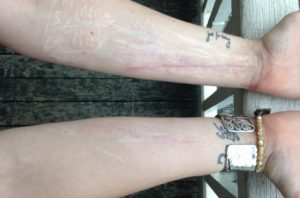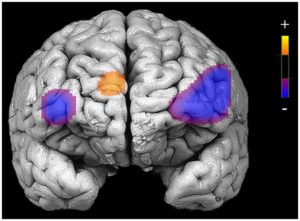Improve Bulimia and Binge Eating Disorder with Mindfulness
By John M. de Castro, Ph.D.
“mindfulness techniques. . . . can prevent destructive behaviors such as not eating, purging, or eating until uncomfortably full. If individuals take a step back and focus on the present moment and their feelings, they will be able to transform impulsive eating habits into healthy thoughts and behaviors.” – Eating Disorders Recovery
Around 30 million people in the United States of all ages and genders suffer from an eating disorder; either anorexia nervosa, bulimia, or binge eating disorder. 95% of those who have eating disorders are between the ages of 12 and 26. Eating disorders are not just troubling psychological problems, they can be deadly, having the highest mortality rate of any mental illness. Binge eating disorder involves eating a large amount of food within a short time-period while experiencing a sense of loss of control over eating. Bulimia involves binge-eating and also involves purging (e.g., self-induced vomiting, compensatory exercise).
Eating disorders can be difficult to treat because eating is necessary and cannot be simply stopped as in smoking cessation or abstaining from drugs or alcohol. One must learn to eat appropriately not stop. So, it is important to find methods that can help prevent and treat eating disorders. Contemplative practices, mindfulness, and mindful eating have shown promise for treating eating disorders. Acceptance and Commitment Therapy (ACT) is a mindfulness-based therapy that has also been shown to alter eating behavior. Dialectical Behavior Therapy (DBT) produces behavior change by focusing on changing the thoughts and emotions that precede problem behaviors, as well as by solving the problems faced by individuals that contribute to problematic thoughts, feelings and behaviors. In DBT five core skills are practiced; mindfulness, distress tolerance, emotion regulation, the middle path, and interpersonal effectiveness. Mindfulness and acceptance-based treatments in general produce change by targeting acceptance, mindfulness, psychological flexibility, cognitive diffusion/distancing, and emotion regulation.
Scientific studies of the application of mindfulness and acceptance-based treatments for eating disorders has been accumulating. So, it makes sense to step back and take a look at what has been learned. In today’s Research News article “Mechanisms and moderators in mindfulness- and acceptance-based treatments for binge eating spectrum disorders: A systematic review.” (See summary below or view the full text of the study at: https://www.ncbi.nlm.nih.gov/pmc/articles/PMC6570825/), Barney and colleagues review, summarize, and perform a meta-analysis of the published scientific research on the effectiveness of mindfulness and acceptance based therapies for the treatment of bulimia and binge eating disorder. They identified 39 studies, 7 utilizing ACT, 22 DBT, and 10 mindfulness-based interventions.
They report that the published research studies found that Acceptance and Commitment Therapy (ACT) produced significant improvements in bulimia and binge eating disorder and it appears that ACT has its effects by improving psychological flexibility. They also report that Dialectical Behavior Therapy (DBT) similarly produced significant improvements in bulimia and binge eating disorder and it appears that DBT has its effects by improving emotion regulation. Finally, they report that mindfulness-based interventions also produced significant improvements in bulimia and binge eating disorder and it appears that these therapies have their effects by improving mindfulness and awareness skills.
Hence, the published scientific research clearly establishes that mindfulness and acceptance-based therapies are safe and effective for the treatment of bulimia and binge eating disorder. It appears that the different therapies may work through different processes in having their effects on eating disorders. The authors conclude that there is a need to study factors that may moderate the effects of these mindfulness and acceptance-based therapies on eating disorders.
So, Improve Bulimia and Binge Eating Disorder with Mindfulness.
“Studies in mindfulness techniques has shown that participants practising mindfulness enjoyed significant reductions in weight and shape concern, dietary restraint, thin-ideal internalisation, eating disorder symptoms and psychosocial impairment.” – Janette Grant
CMCS – Center for Mindfulness and Contemplative Studies
This and other Contemplative Studies posts are also available on Google+ https://plus.google.com/106784388191201299496/posts and on Twitter @MindfulResearch
Study Summary
Barney, J. L., Murray, H. B., Manasse, S. M., Dochat, C., & Juarascio, A. S. (2019). Mechanisms and moderators in mindfulness- and acceptance-based treatments for binge eating spectrum disorders: A systematic review. European eating disorders review : the journal of the Eating Disorders Association, 27(4), 352–380. doi:10.1002/erv.2673
Highlights:
- Analyses of mechanisms of action and moderators of treatment outcome in MABTs for BN and BED are crucial for enhancing the efficiency of treatment development and dissemination.
- Research to date supports improvements in theoretically consistent mechanisms of action from pre- to post-treatment when using MABTs for BN and BED, however conclusions relevant to whether these changes are occurring as theorized are limited by the use of substandard mediation methods, inconsistent measurement tools across studies, and infrequent use of mid-treatment assessment points.
- Recommendations for enhancing future research on mechanisms of action and moderators of treatment outcome are discussed.
Abstract
Objective:
Increasing evidence suggests that mindfulness- and acceptance-based psychotherapies (MABTs) for bulimia nervosa (BN) and binge-eating disorder (BED) may be efficacious however little is known about their active treatment components or for whom they may be most effective.
Methods:
We systematically identified clinical trials testing MABTs for BN or BED through PsychINFO and Google Scholar. Publications were categorized according to analyses of mechanisms of action and moderators of treatment outcome.
Results:
Thirty-nine publications met inclusion criteria. Twenty-seven included analyses of therapeutic mechanisms and five examined moderators of treatment outcome. Changes were largely consistent with hypothesized mechanisms of MABTs, but substandard mediation analyses, inconsistent measurement tools, and infrequent use of mid-treatment assessment points limited our ability to make strong inferences.
Discussion:
Analyses of mechanisms of action and moderators of outcome in MABTs for BN and BED appear promising but use of more sophisticated statistical analyses and adequate replication are necessary.
https://www.ncbi.nlm.nih.gov/pmc/articles/PMC6570825/









